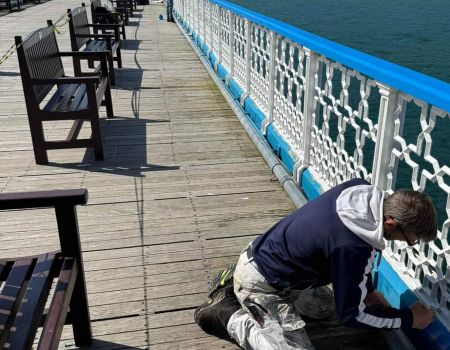A growing tree consists of two types of wood, sapwood and heartwood. The sapwood is the more juvenile area of conductive tissue just below the bark and is where most water/minerals are transported from the roots to the branches. It is roughly the same thickness throughout the life of a tree so that each year as a new layer (or ring) of sapwood grows on the outside of the tree a layer of the same thickness in the middle of the tree stops conducting water and produces the heartwood (see diagram below).

The heartwood formed is denser and less permeable/porous than the sapwood. This is partly due to the accumulation of insoluble chemicals brought there from other parts of the tree; a kind of de-tox mechanism for an organism that can’t excrete nitrogen and this has important implications regarding durability. The heartwood is usually (but not always) coloured, and so in some timber species, such as Pine, Larch and Douglas fir (collectively ‘redwoods’), the difference between the heartwood and the sapwood is clearly visible. In others, such as Spruce/Fir (‘whitewoods’), it is not.
So, in many species of timber the heartwood, once seasoned, can resist fungal and insect attack. This so-called natural durability can be measured by recording the lifetime of stakes in ground contact and this data enables timber species to be grouped according to Durability Classes published in a European Standard (EN350). However, in all cases, the sapwood of trees, even after seasoning, is never other than ‘perishable’ and is therefore, even in relatively dry conditions, always at risk of decay unless it is preserved. Add to this the fact that trees harvested for use in the building and fencing industries are often felled quite early (after 30-40 years growth) so the proportion of sapwood can be relatively high and we can start to see the value/importance of preservation products/processes as a means to maximise the lifetime and value of wood products. To give this some context, the sapwood of a fence post properly treated with ACQ can last for 10 – 30 years, while untreated the same sapwood would usually rot completely in 1 - 3 years (depending on ground conditions).














